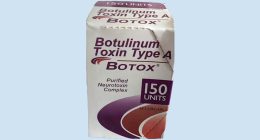
Think about the phrase “air pollution.” Are you picturing black plumes curling out of factory smokestacks and the tailpipes of idling vehicles? Something to worry about outdoors, that is, not inside your home? Not so fast: Air pollutants could be within your own walls too, seeping from your furnace, your basement, even that new couch, and their threats range from eye irritation to an increased risk of cancer, and maybe even death.
Don’t panic (really). Once you recognize the threats, you can often clean up the air in your home without too much trouble. And as we head into a winter where the pandemic may force us to be at home more than ever, now is a good time to make sure your everyday air is as clean as possible. Here are some of the most common indoor air concerns — and how to deal with them.
Radon
In vast swathes of the country, everyday rocks like granite and shale hold deposits of uranium, thorium and radium under the soil. These deposits silently decay into radon, an odorless gas that can seep into homes via minuscule cracks in foundations and floors. Inhaling it (technically, inhaling the radioactive particles that radon produces in the decay process) damages the lungs. After smoking cigarettes, radon exposure is the second-leading cause of lung cancer in the United States.
Homes in some parts of the country, like the Rocky Mountain West, the Midwest and the Appalachians, have a particularly high risk of radon problems from the underlying geology. But because of quirks in minerals and soils nationwide, “radon is everywhere,” said Bruce Snead, director of the National Radon Program Services at Kansas State University. “The only way to know the level anywhere is to test for it.”
Fortunately, that’s not hard to do: Start with a short-term test, available at hardware and home-improvement stores, which takes three to seven days and provides a snapshot of fluctuating radon levels. You want an average of less than 4 picocuries per liter of air (pCi/L), which is 10 times the average outdoor background radon. If the first test comes in higher than that, it’s time to look into mitigation. If not, it’s still worth following up with a long-term test (90 days to one year) to make sure you’re in the safe zone over time.
Worrisome levels of radon should be dealt with swiftly by calling a mitigation professional. Depending on your home style and the soil underneath it, a pro will install some kind of underground suction-and-fan system to suck radon away from your home, and vent it to be diffused in the outdoor air. Costs range from $750 to $4,000, Snead said, and “99 percent of the time will get the house down below 4 pCi/L, and many times below 2 pCi/L.”
Mold
First, the bad news: There’s definitely mold in your living space. Mold, an umbrella term for a variety of fungi, lives everywhere, and you can’t get rid of it. The good news is that it won’t mushroom up to problem levels without moisture, and that you can control.
The biggest issue with out-of-control growth is that mold shoots invisible allergens into the air, causing sniffling, wheezing, eye irritation or rashes in many people. Mold poses even more risk for those with underlying conditions, triggering asthma attacks, exacerbating chronic obstructive pulmonary disease and sometimes causing fungal infections in immunocompromised individuals.
If you have a mold infestation, you probably already know it. “If you can see it or you can smell it, you’ve got a problem,” said Scott Damon, health communication lead for the Centers for Disease Control and Prevention’s asthma and community health branch. The only solution is prompt cleanup, a task you can probably handle yourself in small areas (10 feet square or less) but one that will demand professional help for larger ones. Carefully check references if you do hire a contractor, as scammers sometimes claim they can fix mold problems.
It’s much better to keep mold at bay in the first place by finding and fixing leaks and minimizing dampness. Often the problem is “a leaky roof or window, or a broken pipe,” Damon said. “But it can also be high humidity — use a dehumidifier to bring down that humidity level. And it’s important that you ventilate the more humid parts of your house, like the bathroom, laundry and cooking areas.” Flip on exhaust fans while showering, cooking or running the dishwasher, and make sure your clothes dryer vents outside.
Carbon monoxide
This one’s the killer. Carbon monoxide, an odorless gas produced by burning fuel (including gasoline, wood and propane), can build up in your bloodstream, choking out oxygen in red blood cells. The gas sends more than 20,000 Americans to the E.R. every year. First, it causes nausea, dizziness and confusion, then without a quick infusion of fresh air, carbon monoxide will make you lose consciousness or worse. It can be fatal in just a few minutes with higher concentrations, and a few hours with lower ones.
Risks increase in the winter in colder climates. The biggest culprits are malfunctioning heating systems, such as furnaces, gas water heaters and gas dryers, Damon said. “You should have someone check your heating system — anything that burns gas, oil or coal — every year,” he advised. And don’t warm up your car inside an attached garage, even with the garage door open.
It’s important that you have at least one carbon monoxide detector installed near your bedroom, so it’ll wake you up if the gas builds up in your sleep. Check and replace the batteries at least twice a year. Do it now, while you’re thinking about it.
Volatile organic compounds (V.O.C.s)
A slew of different chemicals fall into the catchall term V.O.C.s (including formaldehyde and benzene), and because they’re found in thousands of different products, from paint to carpeting to furniture to glue, it’s likely that some are off-gassing into your home’s air right now. Short-term, inhaling high levels of them can cause eye and throat irritation, nausea, headaches and dizziness; long-term, it’s linked to cancer and damage to the nervous system, liver and kidneys.
One of the biggest sources of formaldehyde in particular is new building materials, said Dr. Arthur Chang, chief medical officer for the C.D.C.’s division of environmental health science and practice. New particleboard, plywood, adhesives, paints, varnishes and carpeting are all common offenders. If you’re not living in a brand-new house, you can still be exposed by painting or renovation projects, new furniture, and some household cleaners, disinfectants and cosmetics, among other things.
One of the best defenses is to keep levels low in the first place by looking for “low- or no-V.O.C.” or “low formaldehyde” labels when shopping for paint, couches, mattresses and wood products (also check ingredient lists for “urea,” and avoid those products). If a new purchase has that sickly chemical smell, put it in a garage or on a patio to let it off-gas for a few days; wash new drapes before hanging them. Some V.O.C.s are water soluble, so humid air will speed off-gassing; a dehumidifier can help tamp things down.
Ventilation is essential: If you’re painting, cleaning, or doing other home projects, make sure the space gets plenty of outside air. Live in a cold climate? Now might not be the best time for major remodeling work — save it until you can easily keep your windows open for several hours.
The common defense: fresh air
Speaking of ventilation, you may have noticed that all of the above pollutants have something in common. Namely, we can mitigate them with a good influx of fresh outdoor air to prevent the nasty stuff from building up.
The newer your living space, the “tighter” it probably is — that is, the fewer cracks and holes there are to let outdoor air seep in. This is a good thing for energy efficiency, but it also increases the risk of pollutants hanging around in your indoor air. A whole-house ventilation system is an effective way to swap indoor and outdoor air without losing too much heat in the process, but they can cost up to a few thousand dollars and don’t work well with all homes.
The simpler answer: “Increase fresh air exchange whatever way you can,” Dr. Chang said. “If it’s feasible, open the windows, even for a short amount of time.” Adding a few gusts of outdoor air every day will dilute any air pollutant in your home and is an easy, effective step to take during the long indoor season to come.
Source: | This article originally belongs to Nytimes.com









